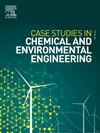红土矿石还原过程中镍品位揭示及回收率优化的机器学习方法
Q1 Environmental Science
Case Studies in Chemical and Environmental Engineering
Pub Date : 2024-12-14
DOI:10.1016/j.cscee.2024.101068
引用次数: 0
摘要
在过去的十年里,对镍铁不断增长的需求促使许多研究人员不断探索镍铁的制造工艺。随着节能工艺需求的增加,红土镍矿的选择性还原和铁镍金属分离已成为主要的研究热点。迄今为止,研究人员已经研究并发表了许多过程变量或特征。在各种工艺变量中,实现高品位和镍的回收是首要目标。本研究试图采用机器学习方法来找到合适的流程优化模型。数据集来源于已发表的镍矿品位(Ni和Fe含量)和还原过程(温度、添加剂、还原剂等)的研究,采用四种回归算法建立镍品位和回收率的预测模型。因此,所获得的模型提供了全面的信息,并总结了过去十年的研究成果,突出了每个特征对目标的影响。此外,机器学习方法可以加快实现目标镍品位和采收率的过程。选择随机森林回归算法的模型是因为该模型能较好地预测Ni品位和恢复,预测Ni品位和恢复的R2训练值分别为0.95和0.97。本文章由计算机程序翻译,如有差异,请以英文原文为准。
Machine learning approach for revealing the nickel grade and recovery optimization in reduction process of laterite ores
The growing demand for ferronickel has led many researchers to continuously explore ferronickel making processes over the past decade. With the increasing demand for energy-efficient processes, the selective reduction of laterite nickel ore, followed by ferronickel metal separation, has become the main focus. Researchers have studied and published many process variables or features to date. Among the various process variables, achieving high-grade and nickel recovery is the primary goal. This research attempts to take a machine learning approach to find the right model for process optimization. Data sets were collected from published studies that feature nickel ore grade (Ni and Fe content) and reduction process (temperature, additives, reductant, etc.), while prediction models for Ni grade and recovery were formed from four types of regression algorithms. Thus, the obtained models provide comprehensive information and summarize the research results developed over the past decade, highlighting the influence of each feature on the target. Furthermore, the machine learning approach can expedite the process of achieving the target Ni grade and recovery. The model with the random forest regression algorithm was chosen because it can predict Ni grade and recovery well, as evidenced by the R2 training values of 0.95 and 0.97 when predicting Ni grade and recovery, respectively.
求助全文
通过发布文献求助,成功后即可免费获取论文全文。
去求助
来源期刊

Case Studies in Chemical and Environmental Engineering
Engineering-Engineering (miscellaneous)
CiteScore
9.20
自引率
0.00%
发文量
103
审稿时长
40 days
 求助内容:
求助内容: 应助结果提醒方式:
应助结果提醒方式:


